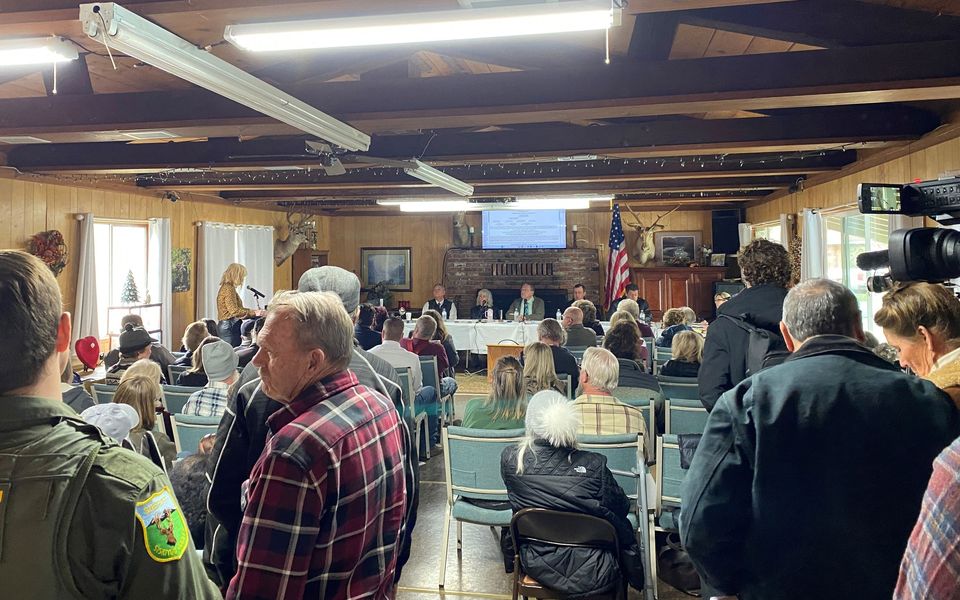 CDFW appreciated the opportunity this week to join with residents, property owners, Tribal members, other state and local agencies and the Klamath River Renewal Corporation at a special meeting of the Siskiyou County Board of Supervisors held at the Copco Lake Community Center. The meeting was organized to hear and address questions and concerns surrounding the drawdown of the Klamath River reservoirs as part of the historic dam removal effort now underway.
CDFW appreciated the opportunity this week to join with residents, property owners, Tribal members, other state and local agencies and the Klamath River Renewal Corporation at a special meeting of the Siskiyou County Board of Supervisors held at the Copco Lake Community Center. The meeting was organized to hear and address questions and concerns surrounding the drawdown of the Klamath River reservoirs as part of the historic dam removal effort now underway.CDFW shared that it has instituted several measures to better protect wildlife since the upsetting and unfortunate loss of 10 deer last month that became stuck in the muddy footprint of Copco Lake following drawdown. CDFW protections now include daily patrols of the reservoir footprints monitoring for wildlife, placing staff on call with wildlife rescue experience who can respond to wildlife-related emergencies, monitoring CDFW’s Northern Region phone line and e-mail account seven days a week for notifications and alerts of wildlife in distress, and installing fladry – essentially colored and reflective strips of material that hang and blow in the wind – around particularly muddy and dangerous parts of the reservoir footprints to deter wildlife from these areas. Since initiating these efforts last month, there have been no more incidents or reports involving any additional deer.
CDFW also addressed the die-off of fish in the reservoirs, explaining that these impacts were anticipated and addressed in environmental review and planning documents. Most of the dead fish are non-native species such as largemouth and smallmouth bass, catfish, bluegill and yellow perch that thrive in warmwater reservoir environments but weren’t expected to survive the transition back to a natural, cold-water river system. The decline in non-native fish is expected to benefit native fish, including trout, salmon and steelhead. The removal of the four Klamath River dams will open up more than 400 miles of additional salmon and steelhead spawning and rearing habitat along with tens of thousands of acres of wildlife habitat within the reservoir footprints that are being reseeded and revegetated with native trees, plants and grasses.


 Advertising
Advertising